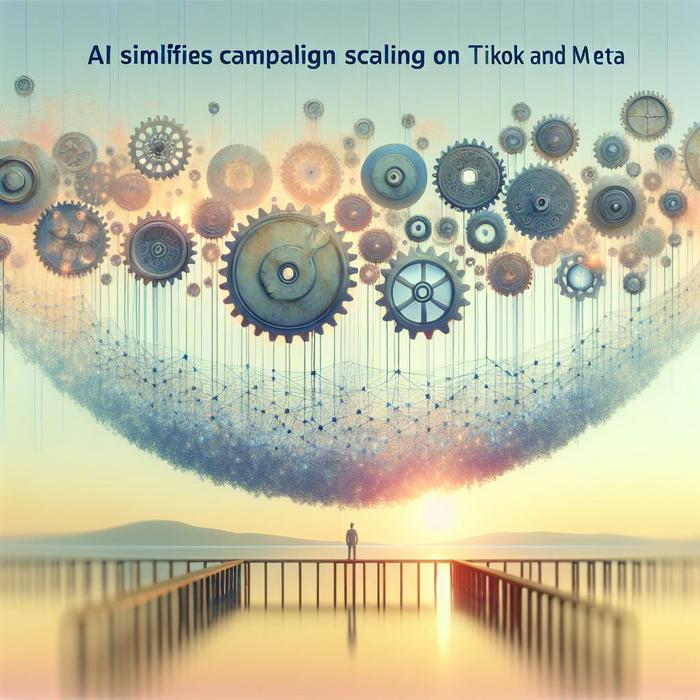A Seasoned Marketer’s Perspective on Meta vs Google Advertising
I remember vividly how my team and I were faced with an almost intractable challenge some years back. We were striving to manage advertising campaigns for two incredibly large clients, each of whom demanded superior campaign results. One was a huge proponent of Meta advertising, and the other swore by the efficacy of Google advertising. Drawing from my broad experience in digital marketing and campaign management, we were able to navigate these massive platforms and gleaned valuable insights into their unique opportunities and challenges.
Meta Advertising: An Ocean of Untapped Opportunities
Meta’s advertising platform initially seemed to be a maze to me. However, as we swam deeper into its ecosystem, we found a dense concentration of active users with rich, detailed demographic information. This database of information was a treasure trove. It offered the opportunity to micro-target our campaigns, resulting in a phenomenal increase in engagement and conversions.
Google Advertising: The Leverage of Wide Reach
On the other hand, Google’s advertising platform provided us with unparalleled reach. Unlike Meta, which relies heavily on personal interactions, Google leverages a wide array of channels – from search to display, video, apps, and more. This expansive network has its benefits, good visibility, and adaptability, making Google a ubiquitous presence across various customer touchpoints.
These insights were invaluable in helping us cut through the complexities of these platforms and uncover gems that propelled superior campaign results for both clients.
Google vs Meta: Weighing the Differences
Here are few comparative findings from our experience with the two platforms:
User Data and Targeting
– Meta’s trove of user data offers robust targeting options.
– Google, albeit less granular, still offers advanced targeting, especially when combined with search intent.
Ad Formats and Creativity
– Meta leads the pack with highly engaging ad units, like Stories, Carousel, and In-stream video ads.
– Google’s universal ad formats are more traditional, but their reach and intent data help balance the scales.
Return on Ad Spend
– With Meta, we observed a higher return on ad spend (ROAS) for campaigns that required deep audience engagement and affinity.
– Google excelled at driving bottom-funnel conversions due to its search-based approach.
A Strategic Move for Superior Campaign Results
As leaders, we are always in pursuit of strategies that drive business growth. With a firm understanding of the strengths and weaknesses of Meta and Google’s advertising platforms, we can chart a balanced course. Navigating the nuances of each platform helps us align our objectives effectively, whether it’s building brand awareness, driving customer engagement, or driving conversions.
I am not suggesting that one platform is superior to the other. Each platform offers its unique merits, and understanding these variations is key to maximizing your digital advertising strategy. The key takeaway here is to adopt a platform-agnostic approach, prioritize your business objectives, assess your target audience, and align your strategy accordingly. By doing so, you can ensure maximum campaign results from your advertising efforts.
From my experience, the harmonious balance of these platforms is where the magic happens. Mixing Google’s expansive reach with Meta’s granular targeting capabilities can set your campaigns up for unparalleled success. It’s the blend of diverse strategy that forms the bedrock of digital advertising, shaping campaign results, and driving growth.
The Intersection of Strategy and Outcome
The relationship between Meta and Google’s advertising platforms is essentially a strategic intersection, where a well-calibrated balance between two powerful platforms can unlock unprecedented growth.
During one campaign I’ve managed, employing Google’s laser-focused search ads combined with Meta’s Feed and Story ad formats, we witnessed a surge in e-commerce transactions. This broader mix allowed us to harness Google’s immense reach and complement it with Meta’s capability to generate high engagement.
Learning Points From Meta vs Google
Having worked with both these platforms, here are some broader learning points:
– A broad and unified marketing strategy overlays both platforms. You can leverage Meta’s strong social integration to build awareness and acquire new customers. Google can then follow up and capture conversions with its powerful search and display set up.
– High precision language targeting is a valuable feature in both platforms to cater to global audiences. It reduces the context loss while translating ads.
Venturing into new grounds, I’ve also explored other platforms like TikTok for some clients. Here, short-form video marketing exists at its pinnacle, offering a unique opportunity to craft innovative campaigns that resonate with the new-gen users.
Continual Learning – A Marketer’s Best Tool
In the ever-evolving landscape of digital marketing, I believe that a marketer’s best tool is continual learning. For instance, while working with a retail platform client, we effectively utilized Meta ads in a fresh, creative manner by crafting tailored content designed to reach and engage their customers. This resulted in a 305% increase in sales. On another occasion, we pitted Google and Meta ads in a head-to-head battle to see which would have a bigger impact.
Transparency is Key
A recurring concern raised by clients is the transparency of digital marketing campaigns. I have always taken the time to explain the intricate details of campaign management to my clients in terms they understand. This Microsoft resource has been a valuable reference to elucidate pay-per-click (PPC) concepts and strategies for a few of my non-tech-savvy clients.
Understanding campaign performance is an essential component in mapping the road to their goals. Analyzing ad campaigns is a crucial skill for digital marketing executives, and I ensure that I share regular updates and comprehensive reports with my clients. These reports encapsulate their campaign’s development, enabling informed strategic decisions that lean into the strengths of these platforms and their campaigns.
Adapting to Change – The Digital Marketing Mantra
In conclusion, the realm of digital marketing is ever-evolving. We’ve seen platforms rise and fall, witnessed the advent of AI and machine learning, and adapted to the seismic shifts caused by data privacy laws. In my journey, I’ve found that the secret to thriving in this space is to keep a learner’s mindset, adapt to changes while staying grounded in fundamentals. While the tools and platforms we use may change, the objective remains the same: to drive growth and help businesses reach their peak potential.
Understanding and harnessing the power of different platforms, such as Meta and Google, and striking a balance is in essence the act of continually refining your digital marketing craft. In the face of constant novelty, we must remember that at the heart of digital marketing, it’s all about connecting with people. As we leverage the opportunities these platforms offer, we’re not just targeting users – we’re reaching out to individuals, each with their own stories and needs. Treating our digital interactions with empathy and respect fosters a higher user engagement, building relationships that translate into tangible growth.
As I look ahead, I’m enthusiastic about the possibilities that await us. The digital marketing landscape is vast and varied, always offering new challenges to tackle and heights to reach. As we move forward, I’m confident that with my commitment to learning, adaptability, and laser-sharp focus on growth, the digital growth journey will continue to be a rewarding one.










mixing both meta and google ads seems like a solid play for maximising conversions. meta’s micro-targeting with google’s wide net can creatively engage different affinity audiences. the balance of both platforms seems key for significant roas.